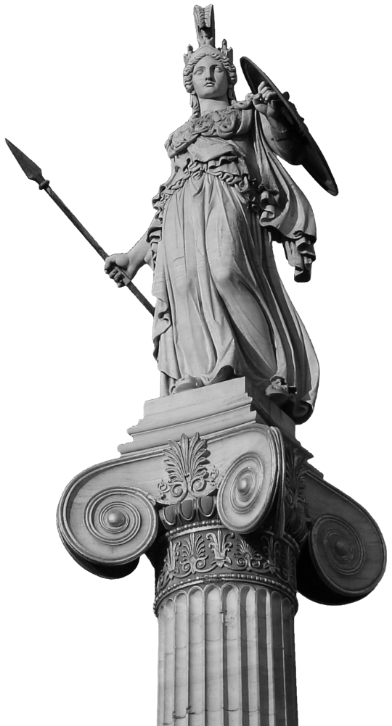
THE CULTURAL
HERITAGE
In organizing the road selection process, additional research was carried out to select the roads by area, assess, record and analyze the historical wealth contained in the road information. Street names are in many cases inextricably linked both to historical events that took place in the wider area, but also to personalities who lived or worked there, contributing to the dominant image of the collective past and strengthening historical memory. Research and systematic cross-referencing of information was carried out, which led to the collection, recording, processing and analysis of historical information.
It is noteworthy that no relevant research of cultural and historical content was found for the historical center of Athens and Piraeus. Information about these roads was collected from many sources: literature, repositories, databases, museums, newspapers, modern and past photographic archives, audio-visual material from different time periods, as well as social media. Checking the sources was more difficult for earlier eras for which there were not many sources.
At the same time, information from the sources had to be cross-checked to ensure reliability. In general, these are streets whose names mainly honor great personalities of the country, as well as important events or places. However, even permanent residents of an area are often unaware of information about honored persons, cultural sites, events or places.

OUR AIM
• The gathering and processing of the material that provides the historical information behind the street name. The aim is to format the content in such a way that it does not tire the user (as it is addressed to a non-specialist audience), but at the same time provides the possibility of further information in several languages.
• The development of semiological associations between roads and points of interest, as well as the possibility of creating thematic-historical itineraries based on the user’s interest profile.
• The integration of the above into an application that will work based on both existing geospatial and visual recognition technologies, which will have additional smart capabilities as it will redefine its profile based on the user’s preferences.

JUST WEAR YOUR
AR GLASSES
AND WALK
THROUGHT LIVE
CITY HISTORY
ART TECHNOLOGY
CODING
_________________
IN HISTORY’S
SERVICE

THE INTERACTIVE
CITY ROUTES
After detecting the end user’s location, the app can suggest cultural routes and specific points of interest (POI’s). The end user can access some basic information about each POI from their mobile device in order to decide their favorite route or monuments/places they would like to visit
Along with Points of Interest, the app also provides a short Route List, informing the end user of points of interest / aspects / information about the routes they can take. From a historical perspective, the end user of the application receives historical information not only about their destination, but also about their “route” as they explore it.
In addition, the app provides information about distances, the expected duration of the trip and the number of points of interest that the user can reach/see during this trip.

THE TECHNOLOGICAL
IMPLEMENTATIONS
The technologies used to support the development of the application, as well as the entire digital infrastructure, are involved: NodeJS, Unity, Vuforia SDK, React JS, WikiTude SDK, Android Java.
The end user while installing the application on a mobile device, browses through some of the cities supported by the application. Whenever he wonders about where he is, he can go into the app and find the street name.
Let’s take Eleftheriou Venizelou Street for example. The application provides historical information about the political figure in question, a 3D rendering of his portrait, as well as a map of Greece as it was shaped after the end of the war battles in which he participated.
